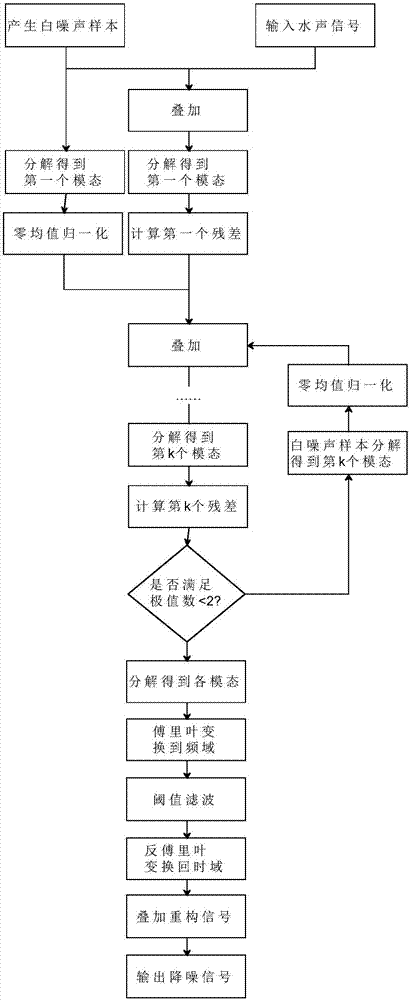Submarine sound signal noise reduction method
A technology of underwater acoustic signals and signals, applied in transmission systems, speech analysis, electrical components, etc., can solve the problems of non-Gaussian distribution of independent components, inability to represent real signals well, and low reconstruction accuracy, so as to facilitate subsequent processing , Elimination of noise components, the effect of high noise reduction performance
- Summary
- Abstract
- Description
- Claims
- Application Information
AI Technical Summary
Problems solved by technology
Method used
Image
Examples
Embodiment Construction
[0039] Embodiments of the present invention are described in detail below, and the embodiments are exemplary and intended to explain the present invention, but should not be construed as limiting the present invention.
[0040] The purpose of the present invention is to propose a new underwater acoustic signal denoising method, by decomposing the input underwater acoustic signal into a new mode, then transforming it to the frequency domain for threshold screening and filtering, and then inversely transforming it to the time domain to reconstruct the underwater acoustic signal. Acoustic signal, and finally output the underwater acoustic signal after noise reduction.
[0041] The basic steps of the present invention are as follows:
[0042] Step 1: Decompose the input underwater acoustic signal into various modal components;
[0043] Step 2: transform each modal component obtained by decomposition into the frequency domain for processing;
[0044] Step 3: According to the dist...
PUM
 Login to View More
Login to View More Abstract
Description
Claims
Application Information
 Login to View More
Login to View More - R&D
- Intellectual Property
- Life Sciences
- Materials
- Tech Scout
- Unparalleled Data Quality
- Higher Quality Content
- 60% Fewer Hallucinations
Browse by: Latest US Patents, China's latest patents, Technical Efficacy Thesaurus, Application Domain, Technology Topic, Popular Technical Reports.
© 2025 PatSnap. All rights reserved.Legal|Privacy policy|Modern Slavery Act Transparency Statement|Sitemap|About US| Contact US: help@patsnap.com



